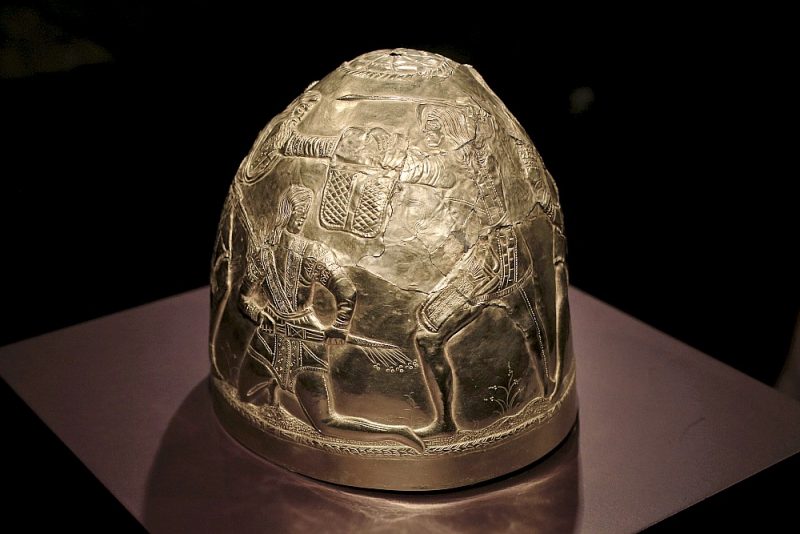
Scythian gold helmet from the exhibition “Crimea – gold and secrets in the Black Sea”.
Photo: Peter Dejong / AP / SCANPIX
Viesturs Sprūde, “Latvijas Avīze”, JSC “Latvijas Mediji”
The Court of Appeal in Amsterdam on Tuesday declared that the historical exhibits of the exhibition “Crimea – Gold and Secrets in the Black Sea”, the so-called Scythian gold, should be returned to Ukraine and not returned to the museums in Crimea, which is currently being annexed by Russia.
–
The news
The hospital reveals which vaccines have been given to Covid-19 inpatients
8 hours
–
The news
“Price the gods themselves are fighting in vain! ” Šadurskis believes that the teachers’ open letter has a place in the trash
9 hours
–
The news
Member of Parliament reveals whether vaccinated people will be able to return to normal life after 15 November
1 day
–
The dispute between Ukraine and Russia over the unique antiquities of the Scythian tombs broke out in 2014, because during the occupation of Crimea, Scythian jewelery was on display in a museum in Amsterdam, where it is still stored today.
These are 550 artifacts found in the excavations of Scythian aristocratic tombs in the Black Sea coastal regions of Ukraine – household items, surprisingly high artistic gold and precious stones, pottery, statuettes, weapons. The Scythian state was formed around the 8th century BC. and coexisted with Ancient Greece.
Already in 2016, the Amsterdam Regional Court ruled that, in accordance with the UNESCO Convention, the exhibits must return to the country from which they were exhibited, ie Ukraine.
The Netherlands does not recognize Crimea as a part of Russia. However, Moscow, which has always declared that the artifacts are to be returned to the Crimea, that is, practically returnable to Russia, appealed the decision to the Court of Appeal.
Even now, the director of the Crimean Taurian Central Museum, Andrei Maligin, has told the Russian media that he will appeal the case to the Supreme Court of the Netherlands, which could be the last instance.
Then the case could take another year. Ukrainian media point out that the issue of Scythian gold is principled, because for centuries, even in the times of the USSR, the most valuable was taken away from Ukraine to the museums and archives of Moscow and St. Petersburg (Leningrad), including values directly related to Ukrainian history. For example, Cossack hetman documents and weapons of the Cossack elite, monastic libraries and icons.
Themes
–


